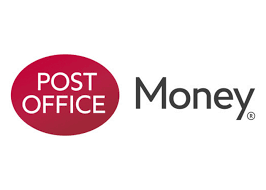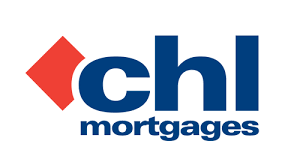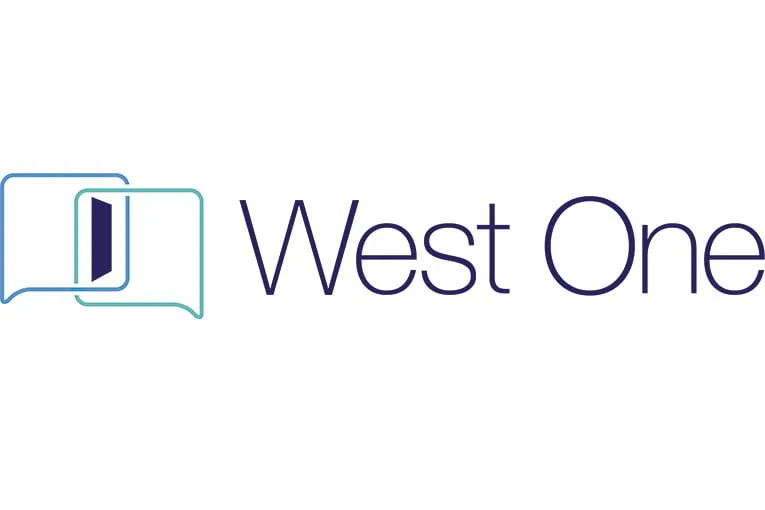Buy to Let Mortgage On New Build Property
Investing in new build properties for buy-to-let purposes can be an appealing choice for landlords, given their modern features, energy efficiency, and low maintenance costs. A new build mortgage is a specific type of mortgage product designed for those purchasing a recently constructed or extensively refurbished property, such as a new build home.
The advantages of new build homes, including superior energy efficiency, lower maintenance requirements, and incentives from developers, make them especially attractive for investors. However, buying a new build with a buy-to-let mortgage comes with its own set of challenges, criteria, and lender considerations that differ from traditional buy-to-let mortgages.
This article explores the details of buy-to-let mortgages on new builds, differences between standard buy-to-let and new build buy-to-let, the process of securing a mortgage, and which lenders are open to financing these investments.
What is a Buy-to-Let Mortgage on a New Build Property?
A buy-to-let mortgage on a new build property is a specialised mortgage product for landlords looking to purchase newly constructed homes or apartments for the purpose of renting them out. Lenders often refer to these as ‘build mortgages’ or ‘build mortgage’ products, specifically tailored for newly constructed or extensively renovated properties.
Lenders typically define a new build as a property that has been newly constructed or significantly refurbished within the last two years. New build mortgages are specialised loan options designed for these types of homes, with eligibility criteria and deposit requirements that may differ from standard buy-to-let mortgages.
For example, a recently completed barn conversion or a home that has undergone major refurbishment in the past two years would qualify as a new build property. The main difference between buy-to-let mortgages for new builds and those for older properties is the stricter lender criteria and often higher deposit requirements.
New builds are attractive to investors due to their high energy efficiency standards, low repair needs, and appeal to tenants seeking modern amenities. However, due to the perceived risks associated with new builds, these properties come with more stringent lending requirements.
Differences Between Standard Buy-to-Let Mortgages and New Build Buy-to-Let Mortgages
While buy-to-let mortgages and new build buy-to-let mortgages share similarities, there are key distinctions that make the latter a unique product. Here’s what landlords should know:
- Higher Deposit Requirements:
New builds often require higher deposits, usually around 25-40%, compared to standard buy-to-let mortgages, which may only require a 20-25% deposit. Lenders request higher deposits to mitigate risks like property value depreciation. When considering how much deposit is needed for a new build, expect that a larger deposit can improve your eligibility for better mortgage deals. Some lenders may still charge a product fee on top of the deposit. - Stricter Loan-to-Value Ratios (LTV):
Many lenders set a maximum LTV of 75% or lower for new builds, reducing the loan’s proportion to the property’s purchase price. This contrasts with traditional buy-to-let properties, which might offer up to 80-85% LTV. - Limited Lender Options:
New builds are not accepted by all lenders, meaning that landlords may need to work with a specialised lenders or one with specific buy-to-let products for new builds. Some lenders offer special deals or a deal for new build properties, but these often come with stricter conditions or higher interest rates. Traditional buy-to-let properties are more widely accepted across the mortgage market. - Stricter Rental Yield Requirements:
New build properties may come with higher rental yield requirements, with lenders expecting rental income to cover a larger percentage of mortgage payments, generally 125-145%, compared to some traditional buy-to-let properties. - Valuation Concerns:
Lenders consider new builds as potentially volatile in value. New homes can initially be overvalued, and prices may dip in the short term, leading to stricter lender requirements and additional scrutiny in property valuation. - For off-plan purchases, mortgage offers are usually contingent on the property being completed. Delays in completing the development can put your mortgage offer at risk, especially if the offer expires before the property is completed.
Property Type Considerations:
There are notable differences between new build flats, build flat, and build flats compared to houses or a house. Lenders often apply stricter criteria to new build flats, including higher deposit requirements and more limited deals, due to perceived risks. Houses typically face fewer restrictions and may be more favorable for certain mortgage applications.
Older Homes vs. New Builds:
Older homes, an older home, or an older property often have more favorable lending conditions than new builds. Lenders may view an existing property as less risky due to established value and rental history, making it easier to secure a mortgage compared to a new build.
Additional Costs and Incentives:
When purchasing a new build buy-to-let, be aware of extra costs such as stamp duty, legal fees, and a product fee. Sometimes, builders may offer incentives to cover legal fees or stamp duty, but these can influence the overall deal and mortgage approval process.
Benefits of a Buy-to-Let Mortgage on a New Build Property
- Tenant Appeal:
New builds attract tenants looking for contemporary features, energy efficiency, and modern infrastructure. One of the key advantages of a new build house or build home is that they are more energy efficient, leading to lower energy bills for tenants. - Such properties typically require minimal repairs, resulting in reduced maintenance costs for landlords. New home buyers and landlords benefit from these advantages, making new build homes and build homes especially appealing as rental property investments.
- Energy Efficiency and Environmental Standards:
New builds are designed to meet current energy standards, making them more attractive to environmentally conscious tenants and reducing long-term energy costs. The energy efficient nature of new build homes means tenants enjoy lower energy bills, which can make the property more desirable and help landlords set competitive rent. - Potential for Capital Growth:
Although new builds may experience short-term dips in value, they often appreciate over time. In areas with ongoing development and increasing demand, new builds can be a solid long-term investment. Landlords can invest in quality furnishings or insurance to further enhance the appeal and value of their rental property. - Reduced Maintenance Costs:
Being newly constructed, these properties typically require less maintenance, potentially offering higher rental income yields with fewer outgoing costs. When managing a new build rental property, landlords must pay attention to ongoing costs and obligations. This includes setting the right rent and calculating monthly rent to maximise returns.
Potential Drawbacks of Buy-to-Let Mortgages on New Builds
When purchasing a new build property for buy-to-let, landlords must weigh the considerations and trade-offs compared to purchasing older, doer-upper properties. New builds may offer modern features and lower maintenance, but older properties can sometimes provide better value or higher yields.
- Higher Upfront Costs:
With a higher deposit requirement and potential new-build premium on purchase price, landlords need more upfront capital. - Risk of Initial Depreciation:
New builds can sometimes be overvalued at sale, resulting in a depreciation shortly after purchase, which can be challenging if a quick resale is required. - Fewer Lenders Available:
Fewer mortgage providers offer loans for new builds, limiting options and often leading to higher interest rates compared to traditional buy-to-let loans. - Potential Lower Rental Yield:
In some cases, new builds may have a lower rental yield than older properties, which might impact overall profitability for landlords focused on high returns.
Eligibility Criteria for Buy-to-Let Mortgages on New Builds
When applying for a buy to let mortgage on a new build property, lenders set out specific eligibility criteria that are often more stringent than for existing properties. One of the main requirements is a higher deposit, typically ranging from 20% to 40% of the property’s value. This larger deposit helps offset the perceived risks associated with new builds, such as potential fluctuations in property value.
Lenders will also assess your income and financial stability, looking for a reliable source of income and a strong credit history. A satisfactory rental income forecast is essential, as lenders want to ensure the rental yield from the new build will comfortably cover the mortgage repayments. Additionally, factors like the property’s energy efficiency and construction quality can influence eligibility, as many lenders prefer new builds that meet high energy efficiency standards.
Each lender may have slightly different eligibility criteria for buy to let mortgages on new builds, so it’s important to research your options and understand what’s required before starting your mortgage application. Meeting these criteria not only improves your chances of approval but also helps secure more favourable mortgage terms.
Annual Income Requirements
Lenders offering buy to let mortgages on new build properties will closely examine your annual income as part of the application process. Most lenders require a minimum annual income, which typically falls between £25,000 and £50,000, though this threshold can be higher for more expensive properties or larger loan amounts. This requirement ensures that you have the financial stability to manage the mortgage, even if the property is vacant for a period.
In addition to your personal income, lenders will assess the projected rental income from the new build property. The combined income must be sufficient to cover the mortgage repayments and any associated costs, such as maintenance and insurance.
A higher annual income can also increase your borrowing limits, giving you access to a wider range of buy to let mortgage products and potentially better interest rates.
Understanding the annual income requirements for buy to let mortgages on new builds is crucial for planning your investment and ensuring you meet the lender’s criteria.
The Process of Getting a Buy-to-Let Mortgage on a New Build Property
- Choosing the Right Property: Researching location, rental demand, and potential for growth are key steps. High demand areas with well connected transport links are ideal for buy-to-let.
- Assessing Deposit and Financial Requirements: Since new builds require a higher deposit, landlords must have at least 25-40% of the property’s value ready for the down payment. The size of your deposit and the property value directly affect how much you can borrow, as lenders use loan-to-value (LTV) ratios to determine your borrowing capacity for a new build buy-to-let mortgage.
- Finding the Right Lender: Given the limited lender options for new build buy-to-let mortgages, it’s beneficial to work with a broker experienced in new build financing. They can help you find the most suitable lender based on property type and personal finances.
- Rental Yield Assessment: Lenders assess projected rental income to ensure it meets their coverage requirements, typically 125-145% of the monthly mortgage payment. This step is vital in establishing affordability.
- Mortgage Application: Once a property is chosen, submit the mortgage application with the necessary documentation, including proof of income, property details, and rental yield projections.
- Valuation and Survey: The lender will arrange a valuation to confirm the property’s worth. If valuation concerns arise, the lender may adjust loan terms or the required deposit amount.
- Mortgage Offer and Completion: Upon approval, the lender issues a mortgage offer. After the offer is accepted, funds are released, enabling property completion and allowing you to take ownership of the new build.
Seeking support from a mortgage broker or specialist can help landlords navigate the process and improve their chances of mortgage approval.
Property Developer Considerations
When investing in a new build property for buy to let purposes, the choice of property developer can significantly impact your investment’s success. A reputable developer with a strong track record and financial stability provides greater confidence in the quality of the build property, timely completion, and long-term rental income potential.
Lenders offering buy to let mortgages on new builds may have specific requirements or restrictions related to certain developers. Some may only approve mortgages for properties built by developers with proven reliability and a history of delivering high-quality new builds. Before committing to a purchase, research the developer’s reputation, review previous projects, and check for any issues related to build quality or delays.
By carefully considering the property developer, you can reduce risks and improve your chances of securing a buy to let mortgage, while also protecting your investment and future rental income.
Lenders Offering Buy-to-Let Mortgages on New Build Properties
Several lenders offer buy-to-let mortgages for new builds, but terms vary widely based on factors like LTV, rental yield, and property valuation requirements. Many of these lenders provide specialised products such as new build mortgage, build mortgage, new build mortgages, and build mortgages, which are tailored for recently constructed or extensively renovated properties. Here are some top lenders to consider:
| Lender | New Build Flats | New Build Houses | Maximum LTV (Flats) | Maximum LTV (Houses) | Notes |
|---|---|---|---|---|---|
| The Mortgage Works (TMW) | Yes | Yes | 70% | 75% | Specialist BTL lender, stricter on flats (may require higher rental yield). |
| BM Solutions | Yes | Yes | 60%–65% | 75% | Prefers experienced landlords, restrictions on property types/locations. |
| Precise Mortgages | Yes | Yes | 70% | 75% | Flexible underwriting, accepts more complex BTL cases. |
| Paragon Bank | Yes | Yes | 70% | 75% | Caters to portfolio landlords, must meet strong rental stress tests. |
| Foundation Home Loans | Yes | Yes | 70% | 75% | Specialist lender for new landlords, HMOs, and limited company BTLs. |
| Landbay | Yes | Yes | 70% | 75% | Lends to individuals and companies, new build accepted with valuation caveats. |
| Aldermore | Yes | Yes | 70% | 75% | More flexible on complex income and portfolio landlords. |
| Zephyr Homeloans | Yes | Yes | 70% | 75% | New builds considered, subject to rental yield and developer type. |
Tax Implications of Buy-to-Let on New Builds
Owning a new build property as a buy to let investment comes with several tax implications that landlords need to consider. Rental income generated from the property is subject to income tax, but you can offset this with allowable expenses such as mortgage interest, maintenance costs, and letting agent fees. Keeping accurate records of all costs is essential for maximising your tax efficiency.
When it comes time to sell your new build, you may be liable for capital gains tax on any profit made from the sale. However, with careful tax planning, it’s possible to reduce your tax liabilities and make the most of your investment.
Consulting with a tax advisor who understands the nuances of buy to let and new builds can help you navigate these complexities and ensure you remain compliant with all tax regulations.
Understanding the tax implications of buy to let on new builds is vital for managing your rental income, covering ongoing costs, and planning for the future.
Property Management for New Build Buy-to-Let Investments
Effective property management is key to maximising the rental income and property value of your new build buy to let investment. As a landlord, you are responsible for maintaining the property, responding to tenant queries, and ensuring compliance with all legal responsibilities, including safety regulations and tenancy agreements.
You can choose to manage the property yourself or hire a professional property management company to handle day-to-day operations. Professional management can be especially beneficial if you own multiple properties or live far from your investment.
Understanding the local market, current property prices, and expected rental yields will help you set competitive rents and attract reliable tenants.
Good property management not only protects your investment but also enhances your reputation as a landlord, ensuring steady income and long-term growth in property value. By staying informed about the market and your legal obligations, you can make the most of your new build buy to let property.
Conclusion: Is a Buy-to-Let Mortgage on a New Build Property Right for You?
A buy-to-let mortgage on a new build property can be an excellent choice for landlords focused on modern, low-maintenance properties with high tenant appeal. However, this mortgage type comes with stricter requirements, higher deposits, and fewer lender options compared to standard buy-to-let products. Prospective landlords should weigh the benefits of new builds, such as energy efficiency and tenant appeal, against the challenges of higher initial costs and potential market risks.
By working with experienced lenders like Barclays, The Mortgage Works, Aldermore, Santander, Skipton Building Society, and Precise Mortgages, landlords can navigate the complexities of new build buy-to-let financing and secure the best terms for their investment.
Consulting with a mortgage advisor can further enhance your chances of securing the right mortgage and maximizing the returns on your buy-to-let new build property.
Get help from an experienced mortgage broker
You can speak to one of our specialist mortgage brokers who would be able to guide you through the process. They will advise if there is a lender available and the maximum loan amount based on your circumstances. We are a whole of market mortgage brokerage with access to all lenders. Call us on 01332 470400 or complete the form with your details for us to give you a call back.
What our customers say
Marlon
25 Apr 2025
Showing our favourite reviews

Always attentive, helpful and efficient
Jonathan, 27 Jan 2025

Best Mortgage Broker in the UK!
Liam, 26 Nov 2024

Ben was really helpful in helping me…
George, 28 Aug 2024
FAQs
What qualifies as a ‘new build’ for a buy-to-let mortgage?
Lenders typically define a new build as a property that has been newly constructed or extensively renovated within the last two years. This includes recently completed homes, flats, and converted properties like barn conversions.
Do new build buy-to-let mortgages require a larger deposit?
Yes. Most lenders require a higher deposit for new builds—usually between 25% to 40% of the property value—compared to 20–25% for older properties. This helps offset perceived risks like initial depreciation.
Are there fewer lenders offering buy-to-let mortgages for new builds?
Yes. Fewer lenders operate in this space due to tighter lending criteria. However, several specialist lenders—like The Mortgage Works, Paragon Bank, and Precise Mortgages—offer tailored new build buy-to-let products.
Can I get a mortgage on an off-plan new build property?
Yes, but it’s more complex. Most lenders issue a mortgage offer that is valid for 6–12 months, and the property must be completed within that timeframe. Delays in construction could jeopardise your mortgage approval.
Are new builds a good investment for buy-to-let landlords?
New builds are attractive for their energy efficiency, modern amenities, and low maintenance, which can appeal to tenants and reduce ongoing costs. However, landlords should weigh these benefits against higher upfront costs and stricter lending criteria.
Ready to Take the First Step?
Whether you’re a first-time buyer, remortgaging, or moving home, bad credit doesn’t have to hold you back.
Understanding credit scoring can help you prepare for a mortgage application. You can speak to one of our specialist mortgage brokers who would be able to guide you through the process. They will advise if there is a lender available and the maximum loan amount based on your circumstances. We are a whole of market mortgage brokerage with access to all lenders.































